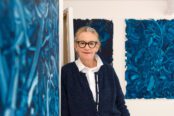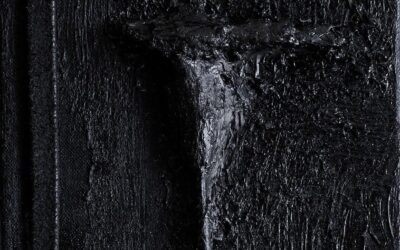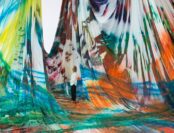The way painter Rune Christensen plays with graphic layers and the depiction of media gives his work a dimensional unification. For example in his paintings elements such as a toy tiger are painted the same as a ‘real’ tiger which is the same as a picture of tiger.
Actual things and their decorative elements are intrinsically linked and then framed within a painted style and format (decorative borders) which heighten the ‘equality’ of all elements and the painting itself. What does this interconnected formalism mean? Are all things equal, are they Amassed? Just as a humans unify the world through grand approaches in science, physics, maths perhaps Christensen’s stylised geometric vision shows art doing the same.
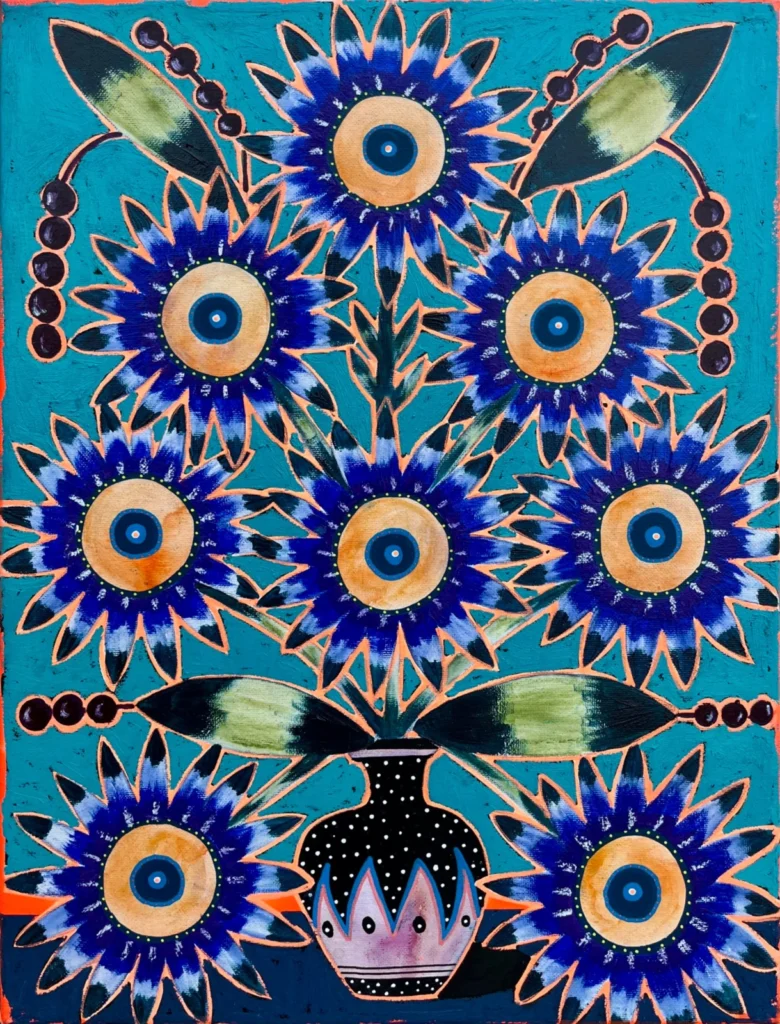
Exhibition notes
Ceramic vases, cups, pots and urns, bowls of fruit, flowers and leafy green plants, a tiger flicking its tail. Danish artist Rune Christensen’s latest series of paintings comprise colourful arrangements of objects and patterns, drawn from the collection in his studio, travels around the globe, personal memories, historic references and his imagination. Amass, his solo exhibition at Kristin Hjellegjerde Gallery in Wandsworth, takes us on a journey through time and place. Each work, like a cabinet of curiosities, offers us a glimpse into the world the artist dreams of and inhabits.
Christensen rarely plans his compositions, preferring to see what emerges on the canvas. As a result, each of his works incorporates a vast array of references to different cultures, histories and beliefs which are unified by the artist’s distinct graphical style and controlled colour palette. He refers to the works in this latest series in particular as ‘carpets’ or ‘tapestries’ in which multiple layers of information or stories are woven on to a single surface. This effect is heightened by the patterned border that frames almost all of Christensen’s paintings, creating an almost picture-book aesthetic which encourages us to read the image on its own terms and within the realm of make-believe.
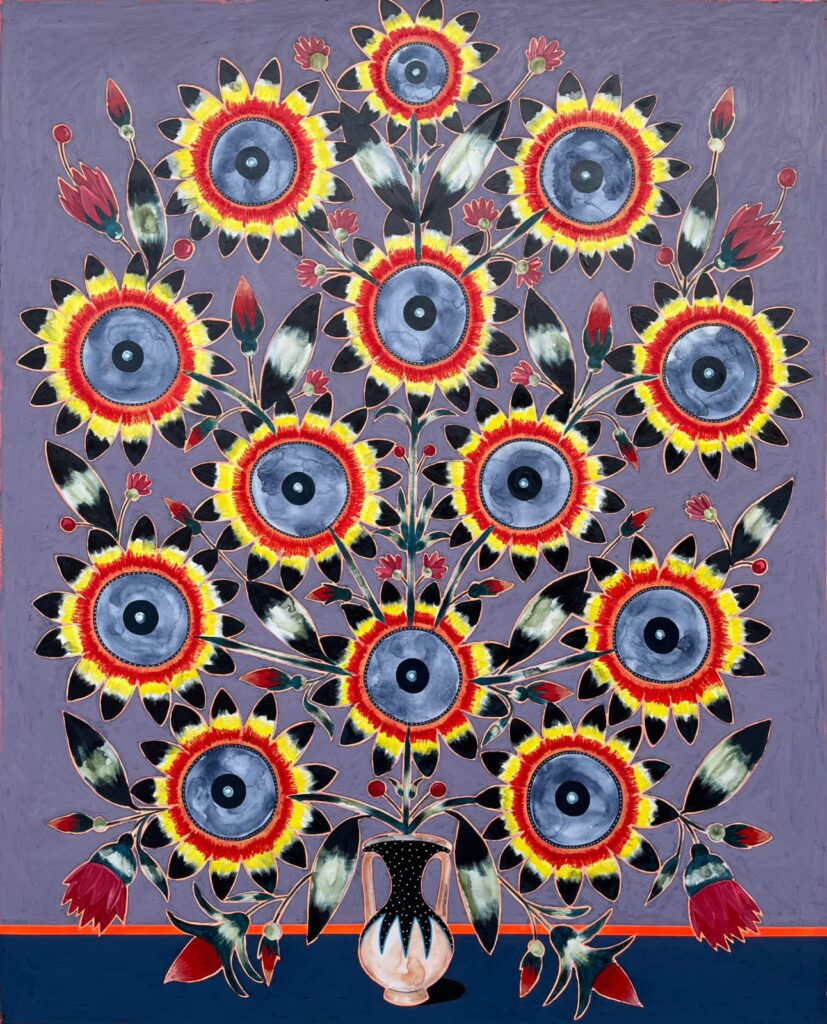
While these latest works refer to the history of still life painting as well as the contemporary social media trend for designing our domestic spaces, the disconnect from reality is important: it’s what allows Christensen to place a tiger on the shelf of a cabinet alongside a bunch of purple grapes. The tinges of fluorescent colour, a mainstay of the artist’s palette, add to the other-worldly atmosphere while also complicating our sense of time. These vivid flashes of orange, recalling the bold aesthetics of graffiti, feel startlingly contemporary while the many patterned vessels that permeate Christensen’s work reflect on craft traditions and ancient ways of living. As Christensen notes, ‘Humans first created pots as a way of storing food and water, enabling us to move away from hunting and gathering. In a similar way, painting acts as a vessel for my experiences and a release.’
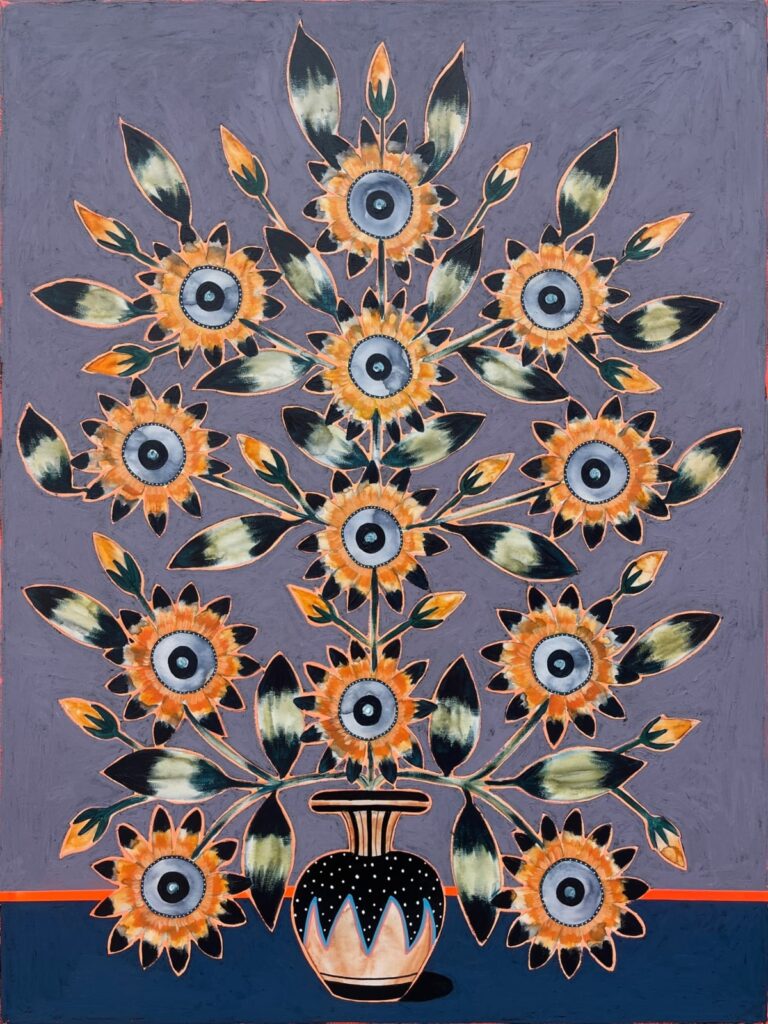
Unusually for Christensen there are no figures in any of these paintings but a spectral human presence lingers around the positioning of the objects. Each ‘thing’ has been given a place to create a particular order or visual effect. ‘The arrangement of things – objects, time, family, relationships – is a process of making sense but also progress, it allows us to move from one thing on to the next,’ says Christensen. At the same time, the unruliness of the plants – the ways in which leaves cascade down the shelves or the stems of sunflowers droop and bend into awkward positions – perhaps points to the impossibility of absolute control. In a similar way, Christensen’s paintings may appear from afar to present an image of perfection, but on closer inspection, the brushstrokes become visible as well as subtle seepages of colour. It is in these imperfections that we discover surprising moments of beauty, harmony and authenticity.
Christensen’s paintings are, as all images, curated to tell a story or conjure a certain atmosphere, but they are also works of the imagination, a series of fragments or beginnings that is offered to the viewer for them to reassemble into their own narrative.
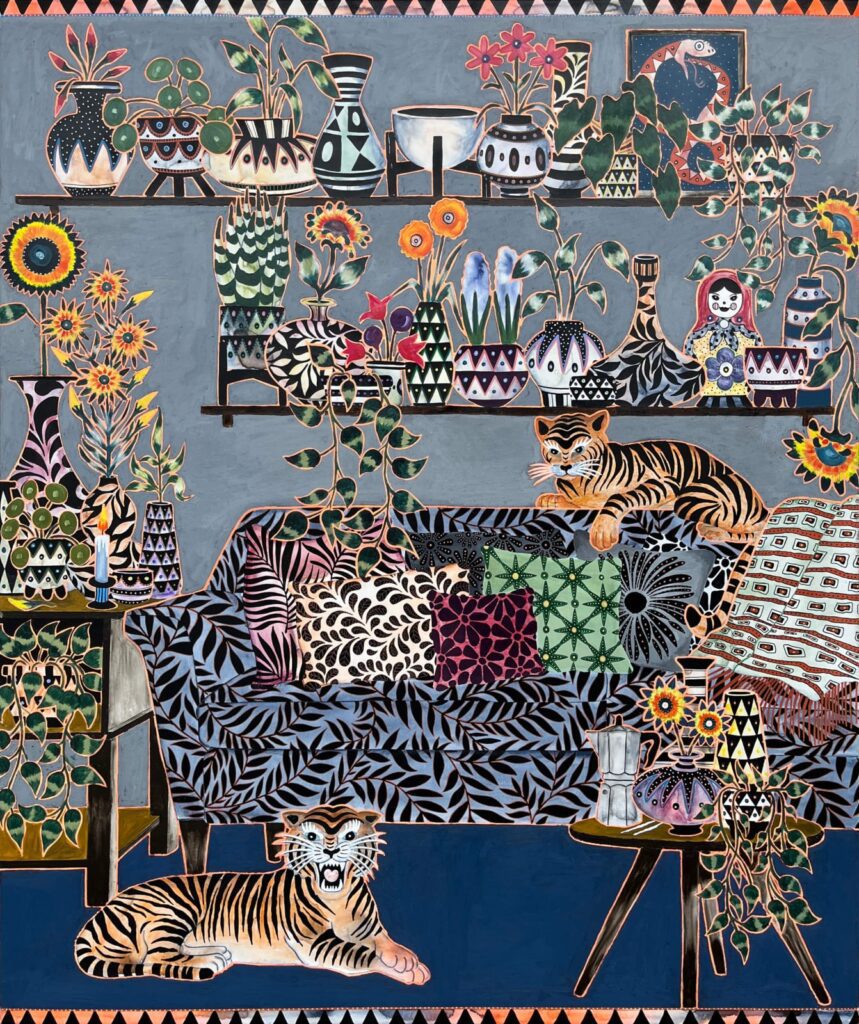
AMASS: Rune Christensen
9 Feb – 9 Mar 2024
Kristin Hjellegjerde Gallery
533 Old York Road
London SW18 1TG

The aim of art is to represent not the outward appearance of things, but their inward significance. – Aristotle




